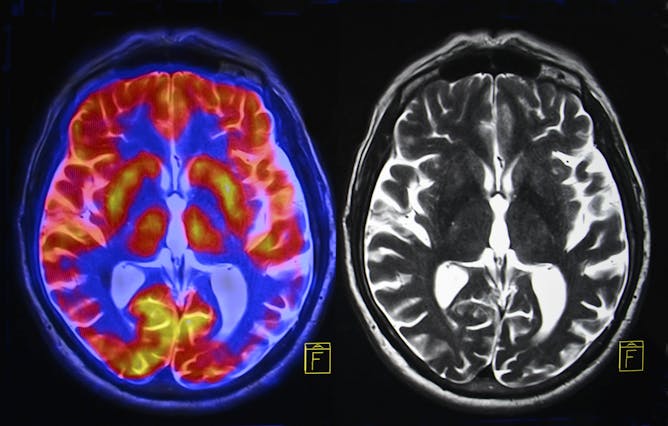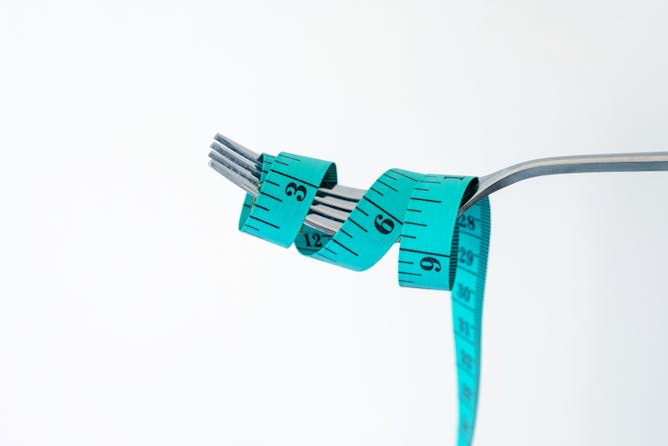|
|
|
Editor's note
|
|
Long before humans started writing, our ancestors made simple patterns containing grids, angles and repetitive lines. But it isn’t clear exactly how we went from there to creating an actual written language some 5,000 years ago. It is especially mysterious given that the part of the brain that processes visual information, the visual cortex, evolved over the course of millions of years in a world where reading and writing didn’t exist. Now Derek Hodgson says he has come up with an answer – with a little help from neuroscience.
Being aware of internal body sensations, such a noticing your heart beat or feeling pain, is called interoception. And researchers have discovered that people with eating disorders have a poorer ability in reading these signals. This knowledge, say Melissa Barker and Rebecca Brewer, could help to develop new treatments for these deadly psychiatric disorders.
Britain seemed on the verge of a moral panic last week, after schools, police, and newspapers issued dire warnings about an online “suicide game” encouraging children to self-harm. But the so-called Momo challenge isn’t real, just the latest example of a digital hoax that fooled many people who should have known better. Lisa Sugiura and Anne Kirby argue that this kind of hysteria is more likely to harm worried parents than their
digital-savvy children.
|
Miriam Frankel
Science Editor
|

|
|
Top stories
|

Our brains evolved in a world without reading.
Semnic/Shutterstock
Derek Hodgson, University of York
Reading and writing may have evolved thanks to a natural ability of the brain's visual cortex to process geometrical shapes.
|

Cozine/Shutterstock
Melissa Barker, Royal Holloway; Rebecca Brewer, Royal Holloway
Interoception – the awareness of internal body signals – is important for regulating eating and interpreting emotions.
|

Ollyy/Shutterstock
Lisa Sugiura, University of Portsmouth; Anne Kirby, University of Portsmouth
It's not just the media who fuel unnecessary concern about so-called suicide games.
|
Environment + Energy
|
-
Richard Betts, University of Exeter
Wildfires broke out across the British Isles during a recent heatwave. But the burning question of the link to climate change does not have an easy answer.
-
Vicky Boult, University of Reading
Amid a growing human population, African elephants are confined to an increasingly managed existence. Do we want more for one of the world's most loved species?
-
Cressida Bowyer, University of Portsmouth; Heather Price, University of Stirling
How theatre and artwork allowed us to better address severe air pollution.
|
|
Politics + Society
|
-
Yana Rodgers, Rutgers University
Abortion rates tripled in Latin America and doubled in Africa under the Bush-era 'global gag rule.' The law, which Obama repealed and Trump reinstated, cuts funding for abortion providers abroad.
-
Helton Levy, City, University of London
From 2008 to 2019, gospel news websites expanded enormously in Brazil. To what extent can their conservative views affect the rights of minority groups?
-
Vanessa Bettinson, De Montfort University
Sally Challen, convicted of murdering her husband in 2010, will now face a retrial. A lawyer explains the legal significance of the ruling.
|
|
Arts + Culture
|
-
Emma Parker, University of Leicester
Joe Orton's final play, a savage parody of social attitudes to sexual coercion, could have been written for the #MeToo generation.
|
|
Science + Technology
|
-
Aurelie Moya, James Cook University
Molluscs that have shells - like pipis, clams and oysters - have to build their own shell from scratch. And they keep building it their whole life, using chemicals from the sea and their own bodies.
|
|
| |
Featured events
|

|
Oscars, Pathfoot Building, University of Stirling, Stirling, Stirling, FK9 4LA, United Kingdom — University of Stirling
|

|
Bishop Hall Lane, Chelmsford, Essex, CM1 1SQ, United Kingdom — Anglia Ruskin University
|

|
Old Gymnasium, Edgbaston Campus, Birmingham, Birmingham, B15 2TT, United Kingdom — University of Birmingham
|

|
Bishop Hall Lane, Chelmsford, Essex, CM1 1SQ, United Kingdom — Anglia Ruskin University
|
|
|
|
| |
| |
| |
| |
| |
|
|
|
|
|
|
|